Calcium is an essential nutrient for plants, and eggshells are a great source of it! Here’s how to make a water-soluble eggshell fertilizer for just pennies.
All plants need a good all-around fertilizer to provide them with the macro and micronutrients they need to thrive. Calcium is a plant micronutrient, meaning that it’s needed in smaller quantities than that of macronutrients like nitrogen, phosphorus, and potassium. But that doesn’t mean calcium isn’t important for healthy plants.
How does the calcium in eggshell fertilizer help your plants?
Whether you’re growing vegetables, have houseplants, or you’re tending a flowerbed, calcium is essential to every plant’s growth.
Calcium helps plants produce healthy new tissue, like roots, shoots, leaves, and buds. More mature plants need calcium to remain healthy—calcium helps maintain the structure of cell walls.
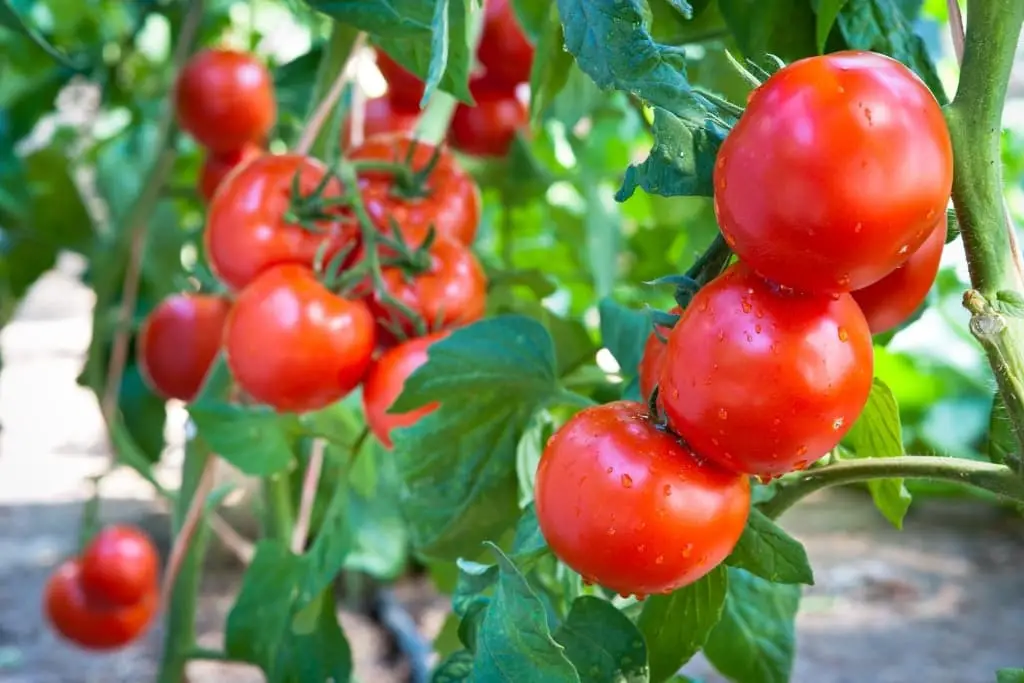
Giving your vegetables the proper amount of calcium can also prevent blossom end rot. As seasoned gardeners know, this frustrating blight can affect vegetables including tomatoes, peppers, and cucumbers.
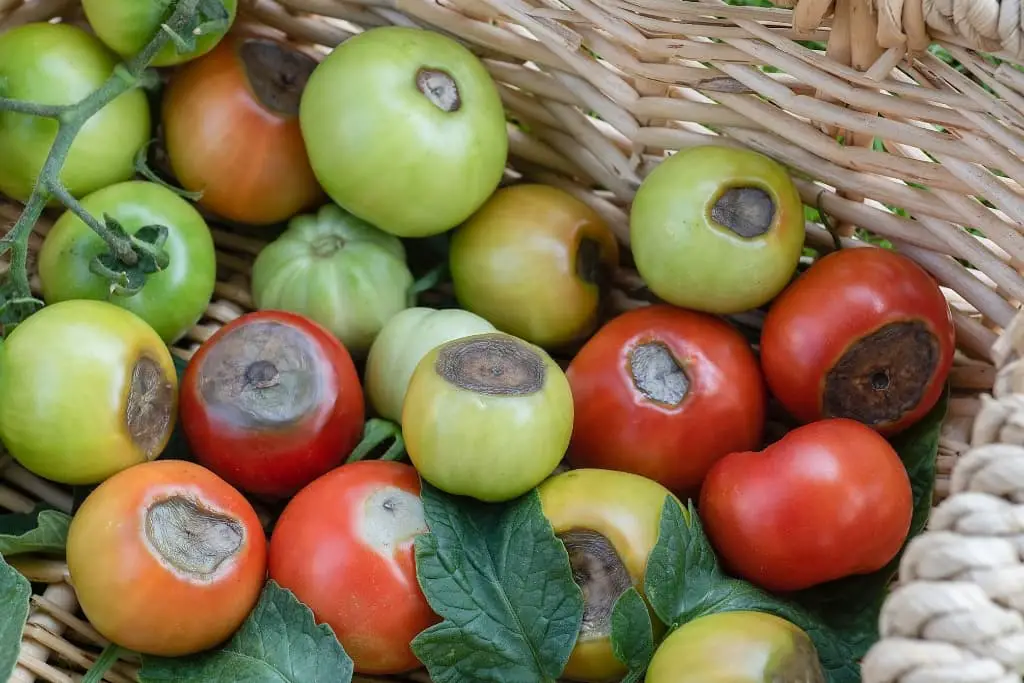
Although many commercial fertilizers include calcium in the formula, cold weather or high humidity can impact the uptake of calcium by your plants, leading to a deficiency. This is why I like to occasionally add a boost of calcium eggshell fertilizer to all of my plants, especially just before they’re about to go into a growth cycle or produce buds.
Why making water-soluble calcium eggshell fertilizer is better than many other methods
You’ll often see advice from gardening and houseplant bloggers and YouTubers around using eggshells as a natural plant supplement. Some say to roughly crush eggshells and put them in water to make an eggshell tea. Others advise using crushed eggshells as a soil amendment.
This advice won’t harm your plants, but it might just be a waste of your time. Eggshell calcium needs to be in a format that your plants’ roots can absorb—and it takes a long time for eggshells to break down to that point, even in water or soil. Eggshell fragments are often found at archaeological digs, if you’re wondering how long it can take!
To make water-soluble calcium eggshell fertilizer that your plants can use immediately, you’ll need a small amount of white vinegar to convert the insoluble (calcium carbonate) to the soluble (calcium). Then you simply add the solution to the water that you normally use to water your plants.
Eggshells are made primarily of calcium carbonate (CaCO3), plus small amounts of calcium phosphate and magnesium carbonate. Calcium carbonate is insoluble in water, which plant roots use to uptake nutrients.
White vinegar contains about 3% acetic acid. When the acetic acid reacts with the calcium carbonate, you’re left with water-soluble calcium, water, and carbon dioxide.
A commonly asked question is whether the vinegar will make your eggshell fertilizer too acidic to use on your plants. As the reaction occurs, the calcium in the eggshells effectively neutralizes the pH of the vinegar. If you have a spare pH test strip (like the kind used for fish tanks) you can check it out for yourself once the vinegar and eggshells complete their reaction.
Disclaimer: we may receive a small commission when you make a purchase from a link on this site, at no added charge to you. See our disclosure policy for more info.
How to make water-soluble calcium eggshell fertilizer for pennies
1. Gather your materials and ingredients
You’ll need at least 10 eggshells—I save mine in a bowl in the fridge until I have enough. If you’ve collected a lot of eggshells, you’ll be able to save the extra dry eggshell powder to make more fertilizer later.
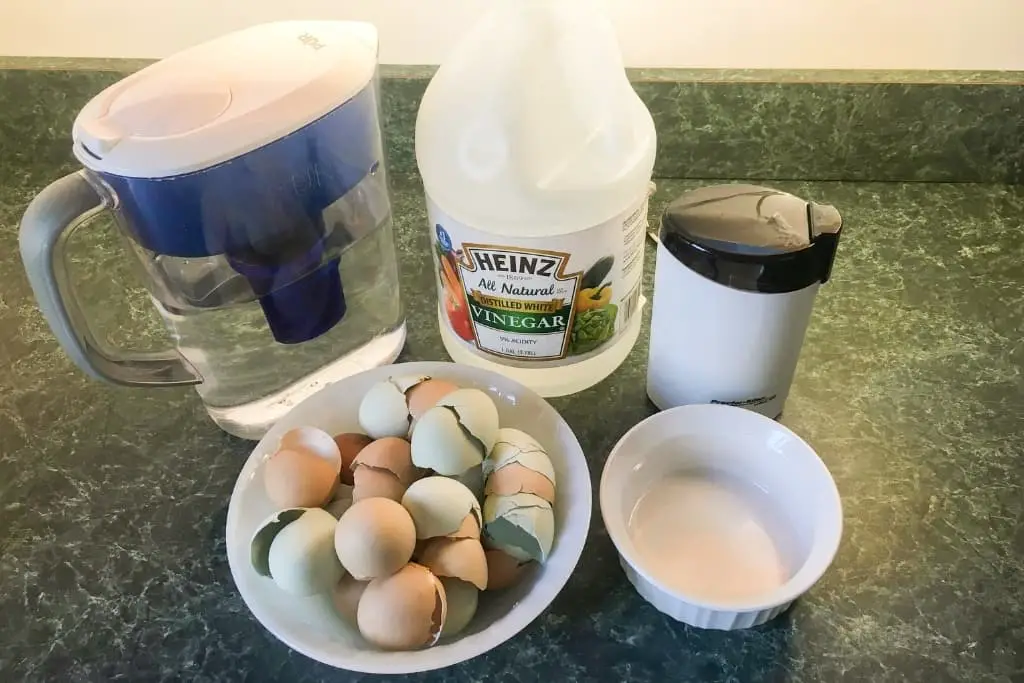
You’ll also need some white vinegar, and whatever water you use to water your plants—rainwater, distilled, or filtered water is best.
Also gather a small bowl or ramekin, a measuring cup with a spout, a clean jug (a milk jug works well), and a wide-mouth container with a lid if you’ll be storing leftover eggshell powder.
For grinding the eggshells, a coffee mill works really well. I’ve used the one pictured above for many years, and it pulverizes the shells in seconds (they don’t make that exact model anymore, but this one from Hamilton Beach is very similar).
If you don’t have a coffee mill, you can always crush the eggshells with a rolling pin. I recommend using a wooden cutting board to crush them on—the shells tend to stay put a bit better than if you use plastic or glass.
2. Rinse and dry the eggshells
Rinse your eggshells under cool running water. There’s no need to scrub them or use soap, and it’s fine if there’s some egg white residue or membrane left in the shells.

Spread the eggshells in a single layer on a baking sheet, then place them in the oven. Turn the oven to bake on its lowest setting, usually around 180°F/80°C. Dry the shells in the oven for about two hours. This step not only removes moisture from the shells, but will also kill any bacteria that may be lurking on the shells.
Remove the baking sheet from the oven, and set aside to cool.
3. Crush and grind the eggshells
Once the dried eggshells are cool, crush them into smaller pieces with your fingers. This will allow you to fit a lot more shell in the coffee mill each time you grind.
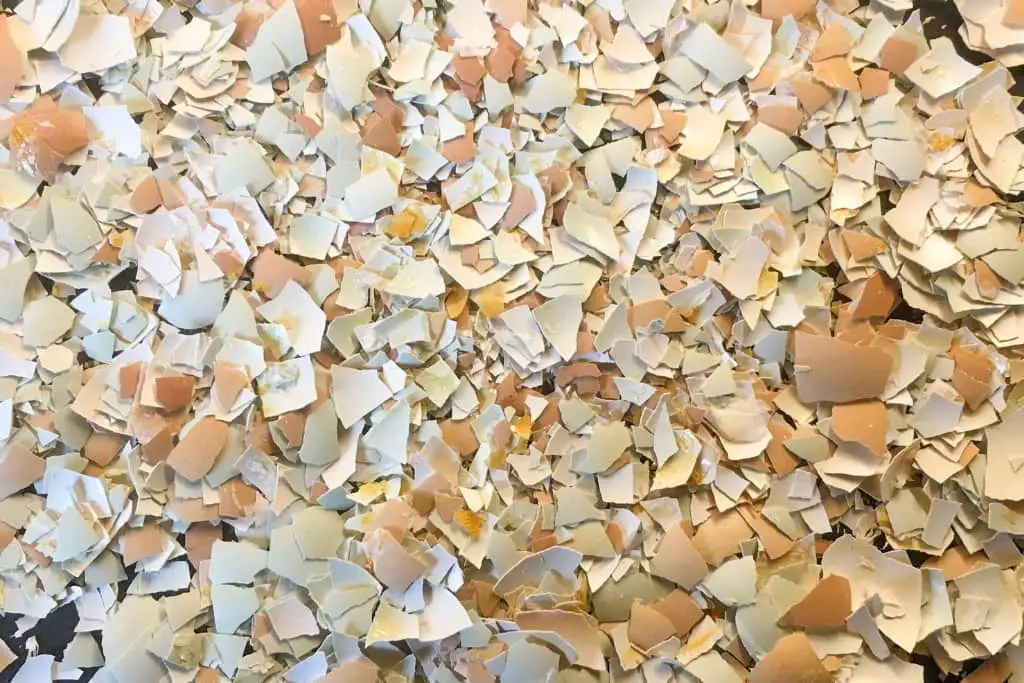
Fill your coffee mill halfway with the roughly-crushed eggshells, and grind them to a fine powder. You’ll want the shells as fine as possible, so you may have to blitz them a few times to grind up any coarse bits.
Once you grind each batch of shells, pour the powder into the container with a lid.
If you’re using a rolling pin instead of a coffee mill, be sure to crush the eggshells to as fine a powder as you can. You might want to put the shells inside a gallon ziploc bag before crushing them.
4. Add the vinegar
For each gallon of water you’ll be using to water your plants, you’ll want to use 2 TBS of eggshell powder. Place the powder in the small bowl, then add an equal amount of white vinegar.
Tip: If you have a lot of plants to fertilize, you might want to use a separate small bowl to measure each dose of the eggshell and vinegar solution—one for each gallon you plan on mixing. This saves you the step of measuring the solution again each time you add it to the water.
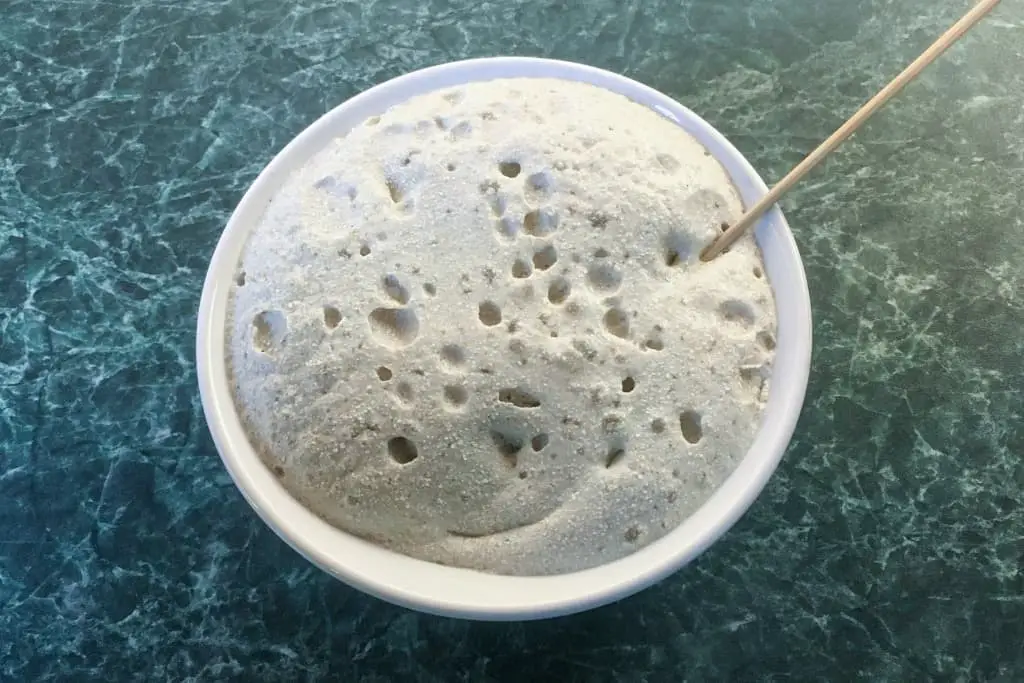
Stir the eggshell and vinegar with a non-metal utensil (I use a wooden skewer, but a mini spatula also works well). The mixture will bubble as the vinegar reacts with the calcium in the eggshells.
Let the mixture sit for about an hour, stirring occasionally to make sure the vinegar reacts with all of the eggshell powder.
5. Mix the calcium solution with water
Once the vinegar has had plenty of time to react with the calcium, it’s time to mix your solution with water.
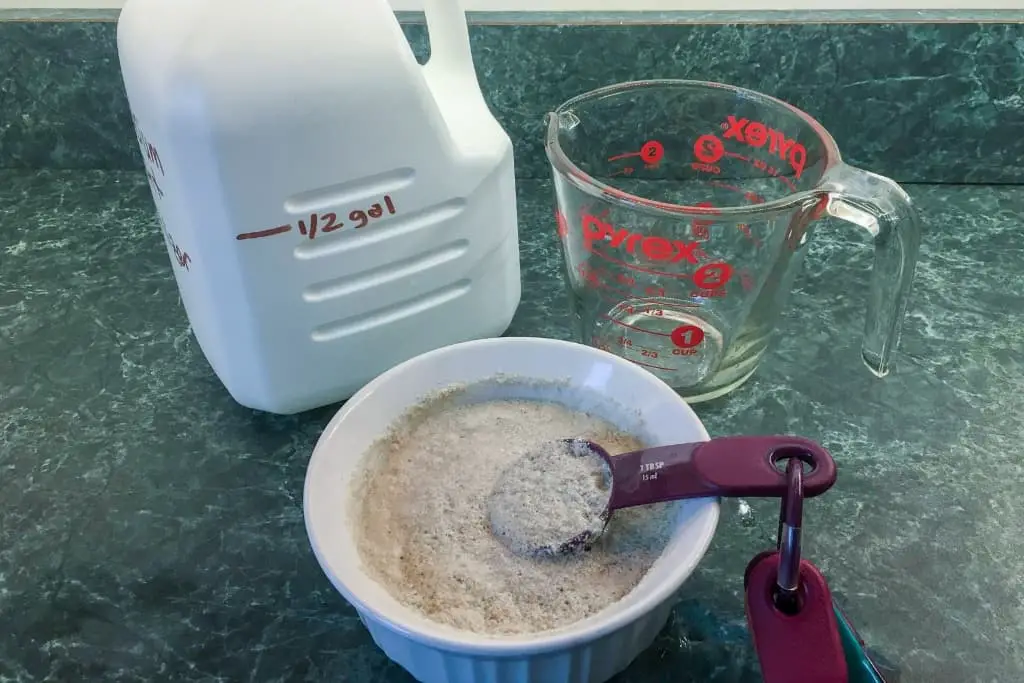
Put enough solution for one gallon of water in the measuring cup, and add enough water to make it pourable—the mixture is a bit gritty.
If you made a large batch of the eggshell-vinegar solution, you’ll use 4 TBS mixture per gallon of water.
Pour your watered-down solution into the gallon jug, and fill the jug almost to the top with water. Put the lid on and give it a good shake.
6. Water your plants with your eggshell fertilizer
Now it’s time to water your plants with your eggshell fertilizer! Water your houseplants, garden veggies, and flowerbeds as usual, giving your plants a bit of a boost from the added calcium dissolved in the water.
7. Save the extra powdered shells to make more eggshell fertilizer
If you crushed more eggshells than you needed, save the extra in your lidded jar. The shells will keep a lot longer dry, and you can just measure out the amount you need and mix with vinegar in the future.
Store the jar in the fridge, where it will keep for several months.
Tip: You can also sprinkle the pulverized eggshells in a ring around the base of your garden vegetables to deter slugs and snails.
Water-Soluble Calcium Eggshell Fertilizer
Equipment
- Coffee mill OR rolling pin and wooden cutting board
- small bowl or ramekin
- clean, empty gallon jug (a plastic milk jug works fine)
- wide-mouth jar or container with lid
Materials
- 10 eggshells (or more)
- white vinegar
- 1 gallon water (rainwater, distilled, or filtered water is best)
Instructions
- Rinse your eggshells with cool water. It's fine if they still have some egg white residue and/or membrane.
- Place the eggshells in a single layer on a baking sheet, and dry in the oven for about 2 hours on its lowest setting (usually around 180°F / 85°C). There's no need to preheat the oven.
- Remove eggshells from oven and allow to cool.
- Break eggshells into smaller pieces with your fingers. Using a coffee mill, crush eggshells to a fine powder. Or, use a rolling pin on a wooden cutting board to pulverize the shells.
- Place the crushed eggshells in the wide-mouth container (you can use this to store any eggshell powder you don't use right away).
- Scoop out 2 TBS eggshell powder per gallon of water you plan to use for your plants, and place it in the bowl.
- Add the same amount of white vinegar to the crushed shells. Stir the mixture with a non-metal utensil to allow the vinegar and eggshells to react—you'll notice some bubbling.
- Let the mixture sit for a minute or two, then give it another good stir. Let the mixture sit for about an hour to allow the vinegar and eggshell to complete the reaction.
- Put 4 TBS of the eggshell/vinegar solution into a spouted measuring cup, and swirl in some water to make it easier to pour. Pour the solution into the gallon jug, then fill almost to the top with water. Put the lid back on the jug and shake well.
- Fill your watering can from your gallon jug, and water your plants with your calcium-rich eggshell fertilizer!
You may also like:
- 12 DIY Indoor Hanging Planters to Beautify Your Home
- How to Get Houseplants for Free (Or Really Cheap)
- How to Make a Pebble Tray for Plants
Pin this for later!
Have you used eggshell calcium to fertilize your plants? Have you tried making water-soluble calcium fertilizer from eggshells? Let us know how it worked for you in the comments below!
Get YOUR FREE PLANT CARE TRACKER!
Always forgetting to water or fertilize your plants? Our free plant care tracker printable can help with that! Help your plants thrive (with less stress for you!) Just let us know where to send your free printable, and it’s on its way.
By signing up you agree to receive the Leafy Little Home newsletter. Unsubscribe at any time.

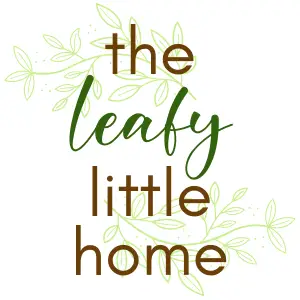
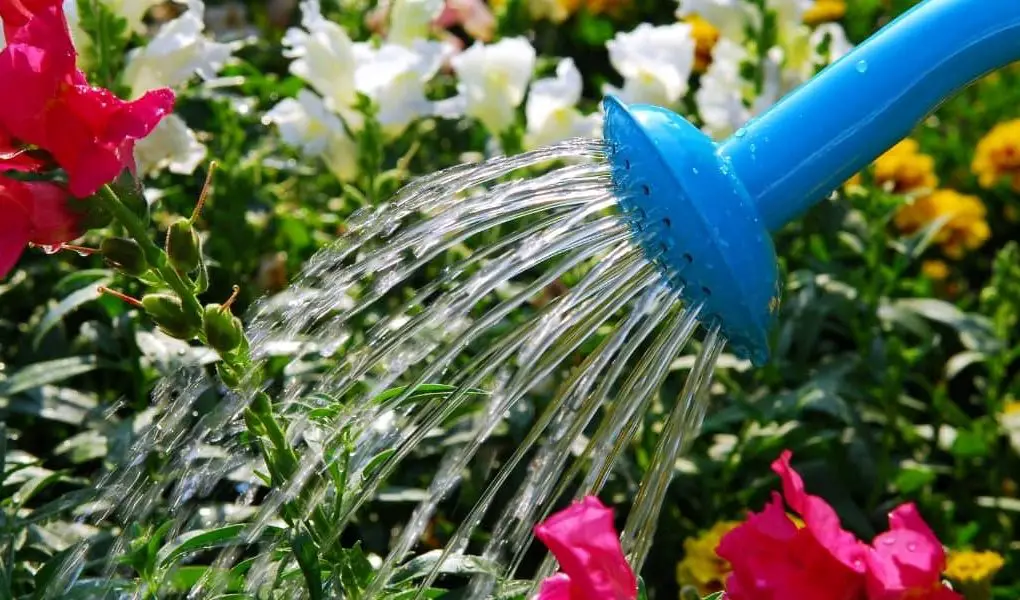
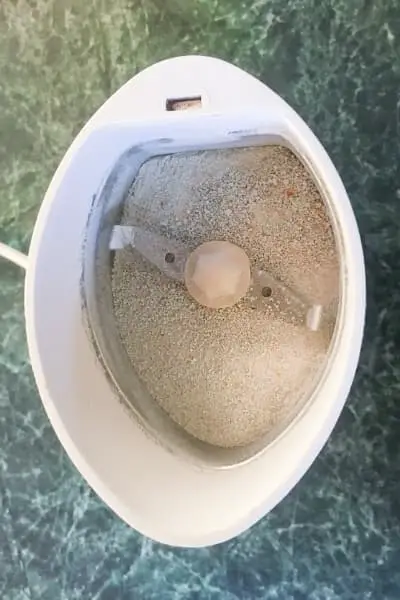
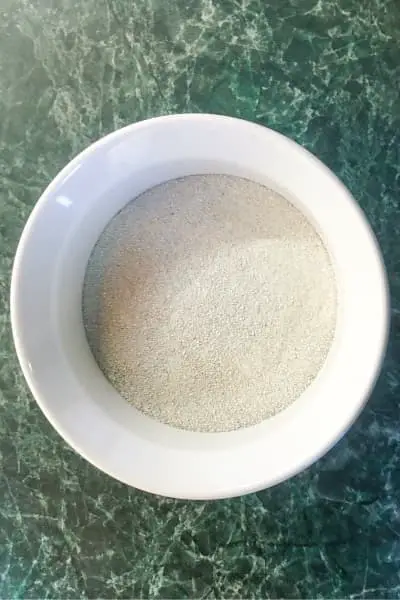
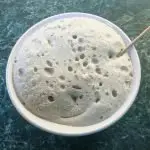

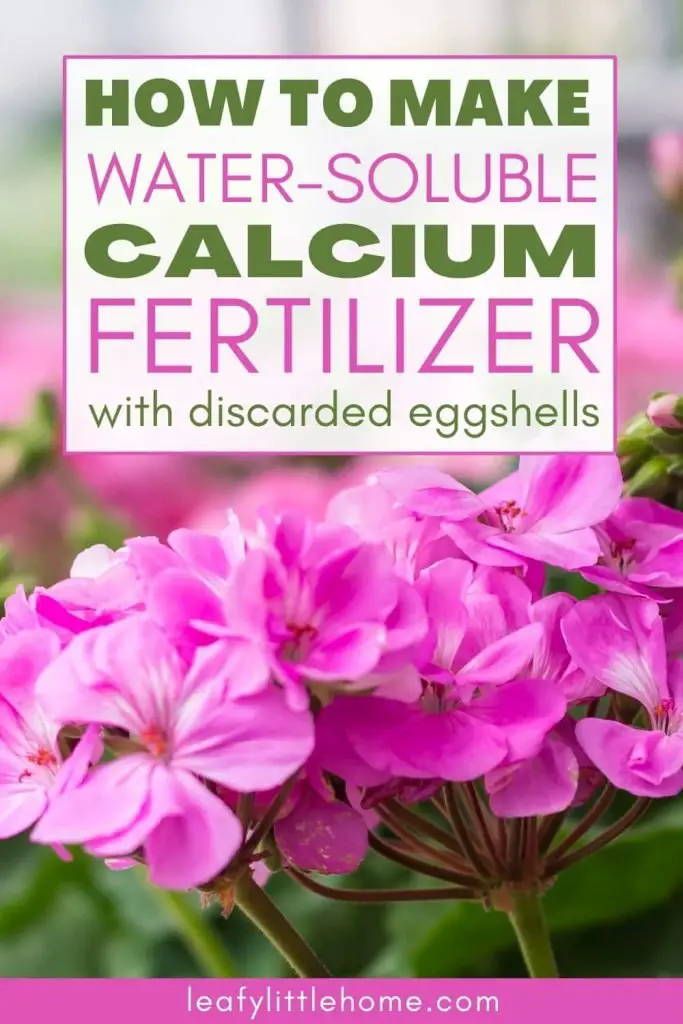
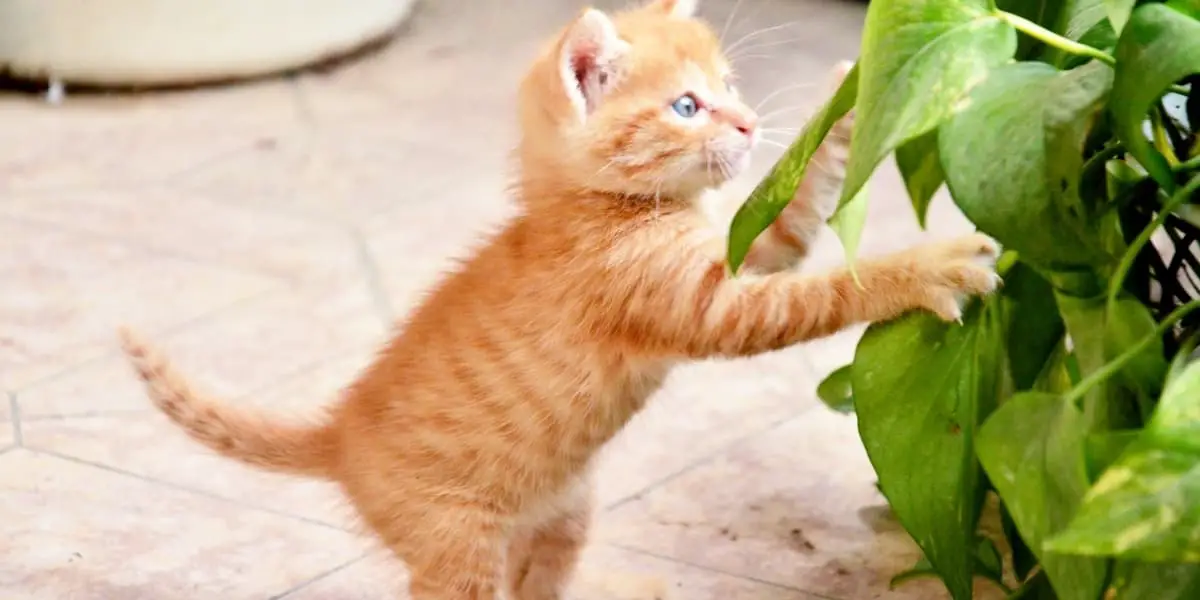
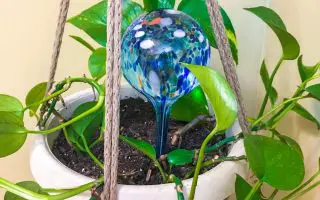
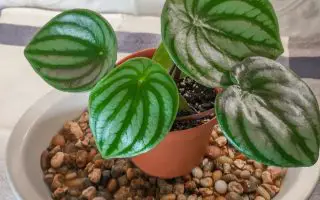

I do it slightly differently…….. I add eggshells water, and vinegar to a single-serve blender cup for my ninja, and grind the works fine. I don’t worry much about cleaning. It then goes into two-pint canning jars and into the instant pot for an hour. The liquid drained off has the benefit of the initial reaction plus the heat and pressure to increase the reaction. No drying, baking, grinding, etc…
It is an egg shell, mild heat should not change the chemistry, thus I heat the oven to 250 F and bake eggs shells for 20 minute, let is sit coasting in the oven for an other 10 minutes or so, skipping any rinsing of the egg as what is in or on the egg as residue is all organic and the heat kills bacteria and viruses, other pathogens . I just place a half a cup of the vinegared shells mixed in the soil per tomato plant. It good to go for the season. If your tomato plants are really loaded (mine are not), then start adding a solution in July and August could be wise move (insurance).
Are the eggs shells going to dissolve completely or will there be eggshell powder left after the reaction is complete?